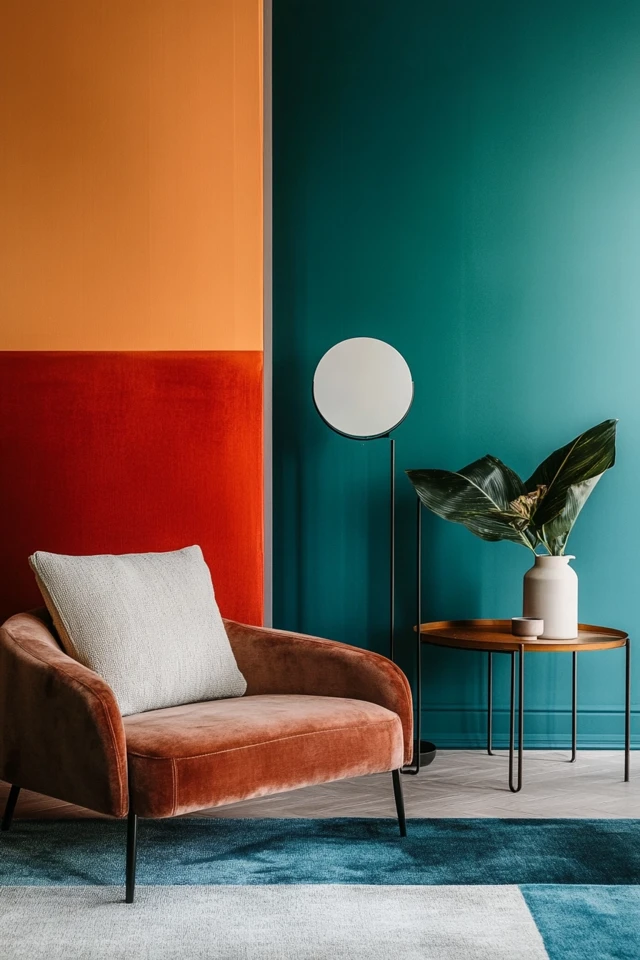Introduction
When it comes to interior design, color blocking is a bold yet versatile approach that allows you to craft unique vibes for your space. Whether you’re looking to energize a living room, create a serene bedroom retreat, or bring vibrancy to a forgotten corner, this technique is a game-changer.
I still remember the first time I tried color blocking in my own space. It was during a gray and uninspiring winter when my living room felt more like a storage room than a sanctuary. Inspired by an Instagram post, I decided to paint one wall a deep cobalt blue and balance it with terracotta accents. The transformation was magical—suddenly, the room felt alive and full of character, and it became my favorite space to relax.
Over the years, I’ve continued experimenting with this technique, always amazed at how easily color blocking can set the mood for any occasion or space. Let me guide you through the art of using color blocking to not only define your vibe but also create rooms that feel distinctly “you.”
The Perfect Design for You
Color blocking is ideal if you’re looking to inject personality and vibrancy into your home while staying stylish and intentional. This approach works for people who crave uniqueness—those who want their spaces to feel dynamic and alive rather than monotone or overly coordinated.
Are you throwing a dinner party and want your dining area to buzz with energy? Or do you need a home office that inspires productivity? Color blocking lets you manipulate the atmosphere without completely redecorating. It’s also perfect for renters or budget-conscious designers because you can achieve stunning effects with just paint, textiles, or small furniture swaps.
Why These Key Elements Work So Well Together
The beauty of color blocking lies in its ability to play with contrasts, harmony, and proportions. Here are the key components that make it so effective:
- Bold Contrasts: Pairing vibrant shades like mustard yellow with emerald green adds drama and draws attention to specific areas of your space. Contrasts create energy and movement, perfect for spaces meant to feel lively.
- Subtle Harmonies: For a more calming effect, use colors in the same family, like soft blush tones alongside peach or terracotta. This works beautifully in bedrooms or meditation spaces.
- Texture Integration: Combine color blocking with textured elements such as wood, velvet, or metals to add depth and dimension. For example, a matte-painted wall in teal pairs wonderfully with copper fixtures or velvet cushions.
- Evidence-Based Design: Research shows that color impacts mood and behavior. For instance, blues and greens are known to reduce stress, while warm hues like orange and red boost energy. Color blocking makes it easy to customize the vibe to fit your needs.
These elements work cohesively to create rooms that feel balanced yet dynamic, allowing you to experiment with boldness without chaos.
How to Achieve Color Blocking: Step-by-Step
- Choose Your Color Palette
- Decide on the vibe you want. Go bold with complementary colors (e.g., navy and coral) or serene with analogous shades (e.g., lavender and mint).
- Use online tools like Adobe Color or Pinterest to find combinations that resonate with you.
- Define the Area
- Select which parts of the room will feature the color blocking. Walls, ceilings, furniture, and rugs are great options.
- Consider creating focal points. For instance, paint a single stripe behind a headboard or color-block the lower half of a wall.
- Prep and Plan
- Sketch your design to visualize the layout. Use painter’s tape to mark off sections for precision.
- Gather your materials, including high-quality paint, brushes, or rollers.
- Apply Your Colors
- Always start with the lightest color to avoid bleeding.
- Layer darker or more saturated tones after the base has dried completely.
- Add Accents
- Incorporate matching textiles, cushions, or decor to tie the palette together. Optional accents like gold picture frames or patterned curtains can further enhance the look.
Picture Gallery
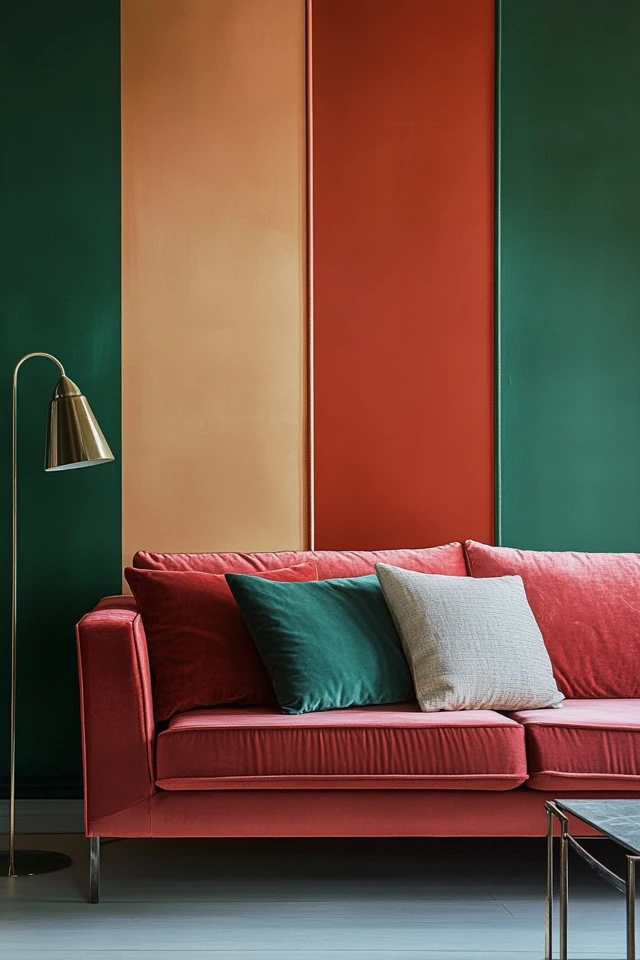
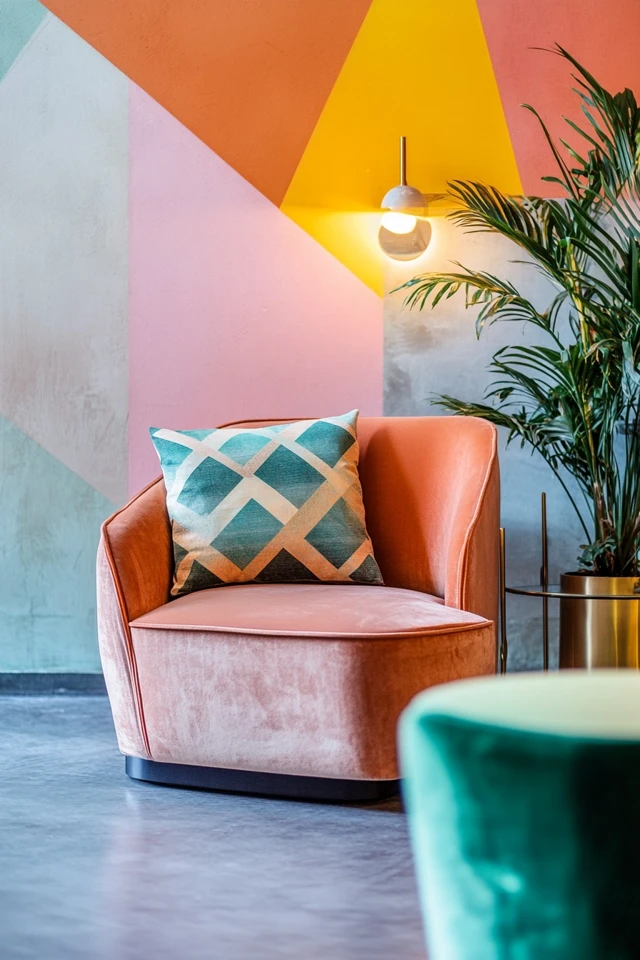
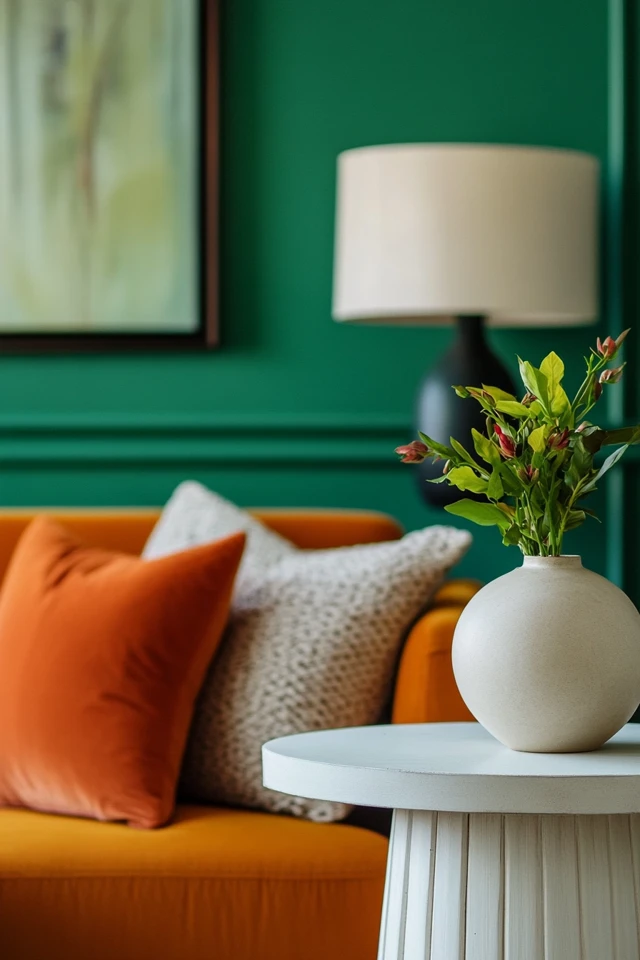
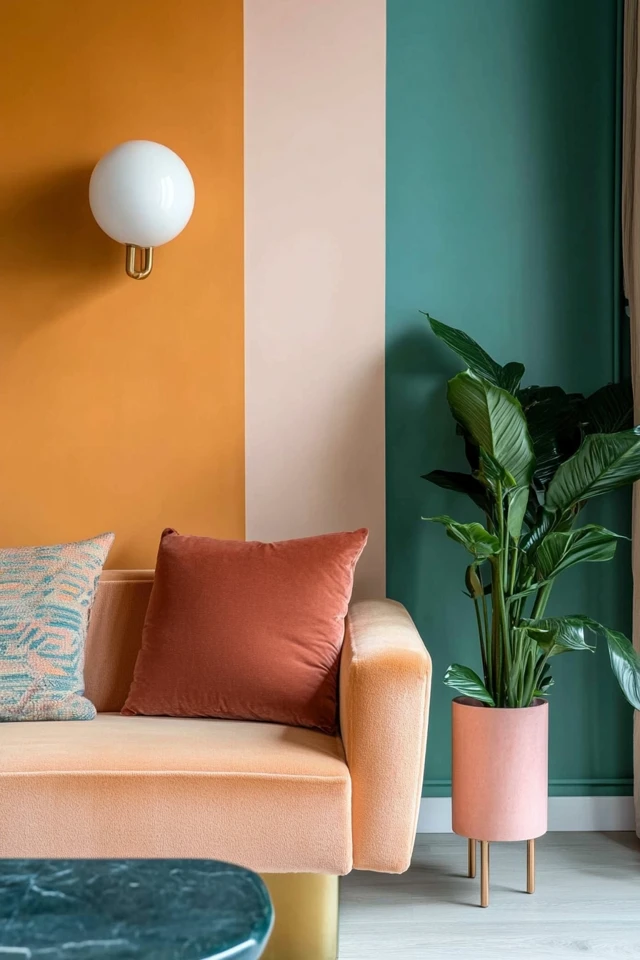

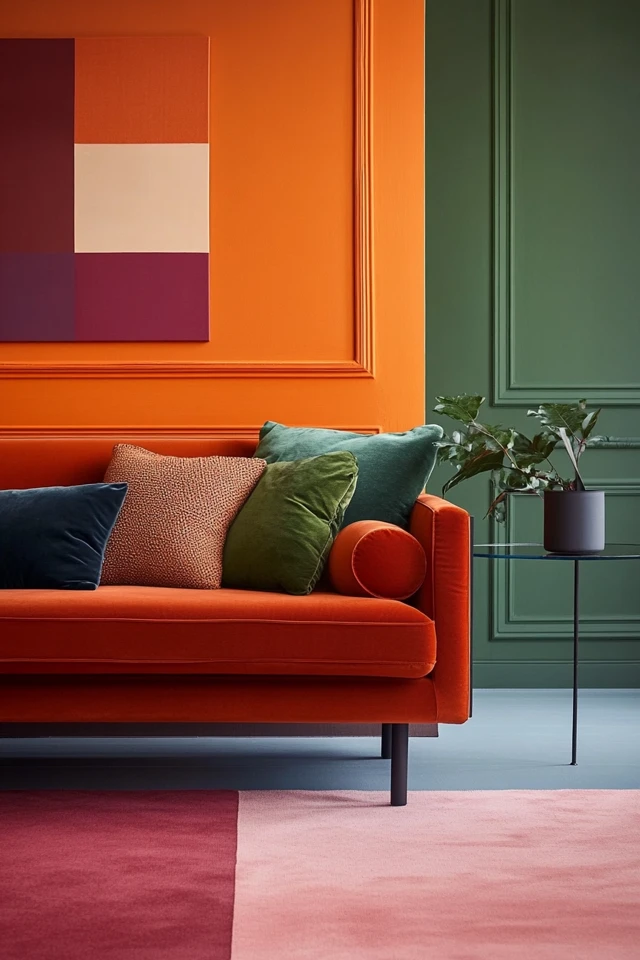
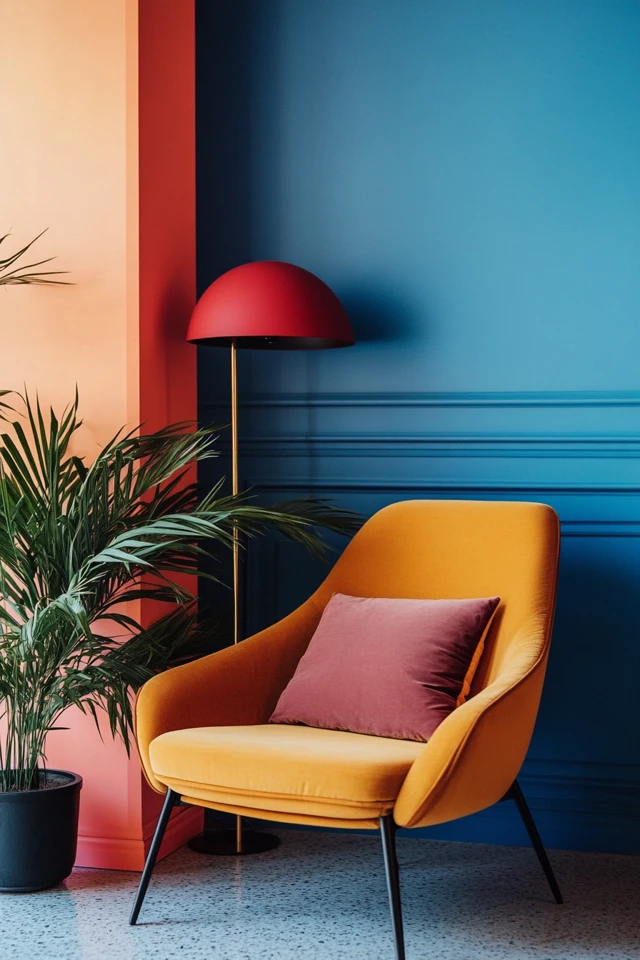
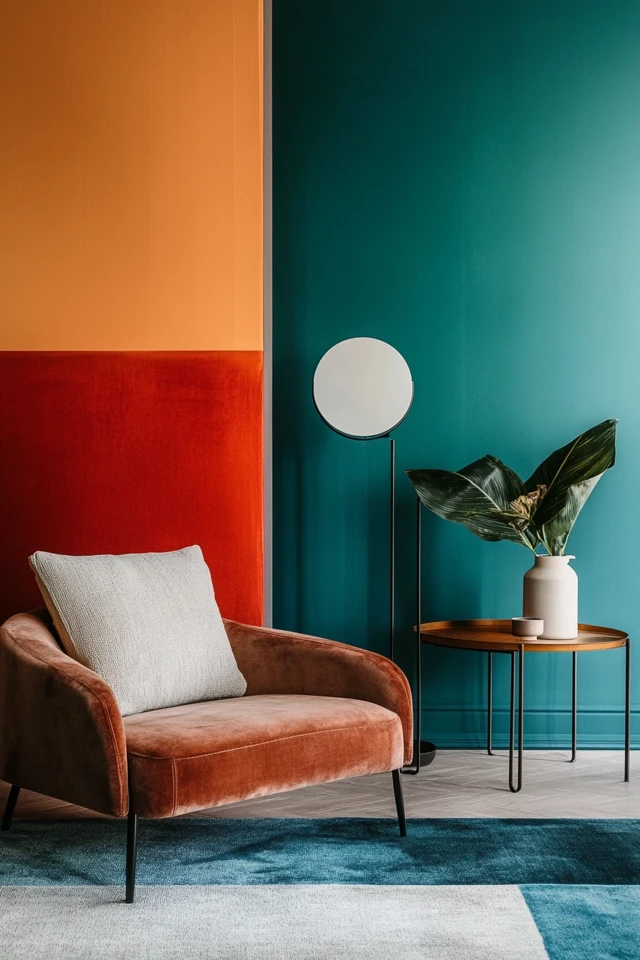
FAQ
1. Can I use color blocking in small spaces?
Absolutely! In smaller spaces, stick to lighter tones or focus on just one wall to avoid overwhelming the room.
2. What if I’m not good at matching colors?
No worries—start with a tried-and-true combo like black and white, or use pre-made color palettes from design tools online.
3. Is color blocking expensive?
Not at all! You can achieve it with just a few cans of paint, making it one of the most budget-friendly design techniques.
4. Can I use patterns with color blocking?
Yes! Patterns like geometric shapes or stripes work well as part of a color-blocked design. Just keep the palette consistent to maintain cohesion.
5. What rooms work best for color blocking?
Color blocking is versatile enough for any room but works especially well in living rooms, bedrooms, and kids’ spaces.
Variations
- Minimalist: Use neutral tones like beige, white, and soft gray to create subtle and serene blocking.
- Maximalist: Go bold with a mix of neon or jewel tones. Incorporate patterns like checkerboards or abstract murals.
- Budget-Friendly: Use washi tape or peel-and-stick wallpaper for temporary designs.
- Scandi Style: Pair soft pastels with natural wood and white walls for a Nordic-inspired look.
- Industrial Edge: Combine earthy tones like rust and charcoal with metallic finishes.
How to Showcase It
- Seasonal Changes: Switch out accent pieces, like cushions or rugs, to keep your color-blocked space feeling fresh throughout the year.
- Holiday Gatherings: Add festive touches, such as metallic golds or reds, to enhance the celebratory vibe.
- Everyday Serenity: A pastel-blocked bedroom becomes a peaceful retreat for unwinding.
- Post-Renovation Reveal: Use color blocking as the finishing touch to elevate and personalize your newly refreshed space.
Occasions to Feature It
- Housewarming parties: Impress your guests with your eye for design.
- Kids’ birthday celebrations: Create a playful and vibrant setting.
- Dinner parties: Use bold blocking to enhance the dining experience.
- Anniversary celebrations: Opt for romantic hues to set the tone.
Conclusion
Color blocking is a fun and accessible way to elevate your home’s interior design, no matter your style or budget. It allows you to set the right vibe, whether you want something playful, calming, or dramatic. Plus, the flexibility of this technique means you can tailor it to suit any occasion or space.
Ready to give it a try? Don’t hold back—grab a paintbrush, some colorful textiles, and experiment with your personal twist on this timeless trend. Be sure to share your results and inspire others to embrace the art of color blocking!

